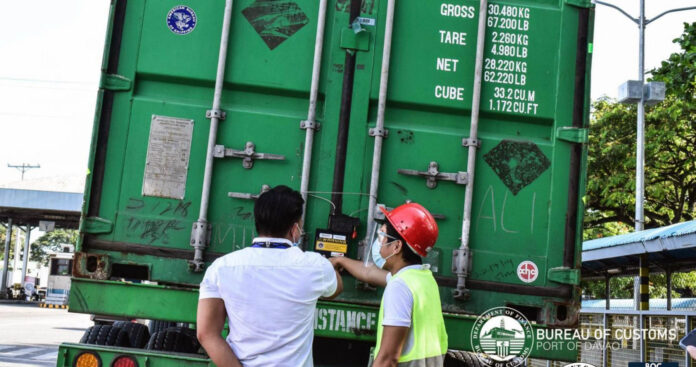
-
The Bureau of Customs’ Electronic Tracking of Containerized Cargo (E-TRACC) System now covers import containers from the ports of Manila and Batangas headed to other islands (inter-island) shipments
-
Destination warehouses can be in economic zones located in Palawan, Cebu, Davao, General Santos City, Zamboanga Del Norte, Misamis Oriental, and other islands
-
For inter-island shipments, the electronic customs seal should have a “heartbeat” (signal transmission) interval of one hour to preserve battery life
-
Any customs clearance without the required E-TRACC booking will not be approved by customs officers
The Bureau of Customs’ (BOC) Electronic Tracking of Containerized Cargo (E-TRACC) System now covers import containers from the Port of Manila (POM), Batangas port, and Manila International Container Port (MICP) destined for other islands and that may be classified as inter-island shipments.
Assessment and Operations Coordinating Group (AOCG) Memo 355-2021, which took effect on July 6, said destination warehouses can be in economic zones located in Palawan, Cebu, Davao, General Santos City, Zamboanga Del Norte, Misamis Oriental, and other islands.
The order is in compliance with Customs Memorandum Order (CMO) No. 04-2020, which established the E-TRACC, a web-based system launched by BOC last year to track inland movement of containerized cargoes during transit and transfer to other customs territories and facilities.
READ: BOC orders e-tracking of cargoes in transit
E-TRACC allows BOC to track, monitor, and audit the location and condition of cargoes, as well as obtain real-time alarms on diversion and tampering of cargoes.
Under CMO 04-2020, an electronic customs seal (ECS) is required during the transfer of cargo to a container yard/container freight station (CY/CFS) or other CFWs; transit of cargo bound for Free Zones, inland customs office, depots, or terminals; transit to customs bonded warehouses (CBW); export of cargo from Free Zones, inland customs office, depots or terminals, and CBWs to port of loading; and transfer of shipments subject to further verification and/or monitoring.
The ECS is a GPS-enabled sealing device or lock that can physically secure a cargo and provide real-time information on its location.
For inter-island shipments, the ECS should have a “heartbeat” (signal transmission) interval of one hour to preserve battery life.
Authorized BOC officers will be responsible for removing or unsealing the ECS.
Destination warehouses, on the other hand, will be responsible for the temporary custody of the used ECS, and are not allowed to transfer the custody of the ECS to any third party unless authorized by the E-TRACC service provider, Ascent Solutions Philippines, Inc.
The operational guidelines for free zone shipments under CMO 04-2020—particularly Sections 10.2, 10.4, 10.8, 10.10, 10.12, and 10.13—will apply to inter-island shipments.
Customs operations officers will not approve any customs clearance without the required E-TRACC booking.
Booking for an E-TRACC trip can be made one day earlier or up to one hour before departure of the container.
E-TRACC requires payment of P500 within a 10-kilometer (km) radius from port of discharge and P700 beyond the 10-km radius from port of discharge. The charge covers both arming and disarming of the ECS.
The system is already being implemented for shipments from POM and MICP going to Philippine Economic Zone Authority economic zones and other Freeports; and from other ports such as Davao and Subic, and the sub-port of Mariveles, Bataan. – Roumina Pablo




